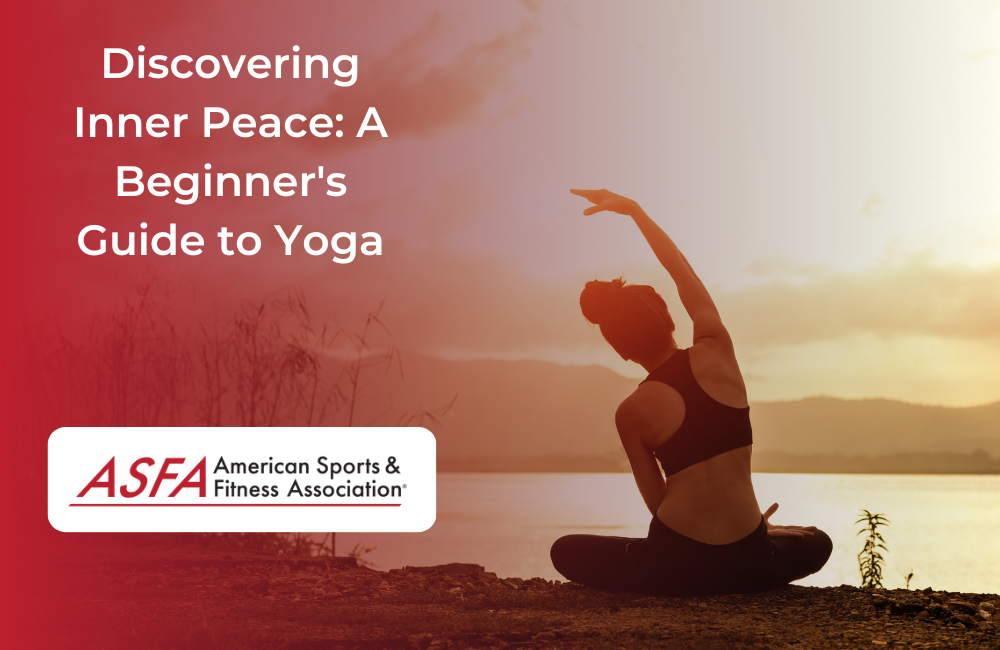In our fast-paced, stress-filled world, finding inner peace has become a universal aspiration. Yoga, an ancient practice that combines physical postures, breathing exercises, and meditation, offers a path towards achieving just that. This blog post serves as a beginner's guide to yoga, providing insights into its history, benefits, and practical tips to get started on your journey to inner peace.
The Origins of Yoga
Yoga is not just a physical exercise; it is a holistic approach to health and well-being that originated in ancient India over 5,000 years ago. The word "yoga" itself means union or connection, reflecting the practice's aim to harmonize the mind, body, and spirit. Yoga's roots lie in various ancient texts, including the Vedas and the Yoga Sutras of Patanjali, which outline the philosophy and principles of yoga.
The Benefits of Yoga
Yoga offers a multitude of benefits, both physical and mental. Here are some of the ways in which yoga can positively impact your life:
Physical Benefits
- Improved Flexibility: Yoga postures (asanas) gently stretch and lengthen muscles, gradually increasing flexibility.
- Enhanced Strength: Many yoga poses require you to support your body weight, leading to improved muscular strength.
- Better Posture: Yoga encourages awareness of body alignment, helping you maintain good posture in daily life.
- Pain Relief: Regular practice can alleviate chronic pain conditions such as lower back pain, arthritis, and migraines.
Mental Benefits
- Stress Reduction: Yoga's focus on controlled breathing and mindfulness can lower stress levels, reducing anxiety and promoting relaxation.
- Mental Clarity: The meditative aspects of yoga enhance mental clarity and focus, aiding decision-making and problem-solving.
- Emotional Balance: Yoga helps regulate emotions, providing tools to cope with life's challenges and promoting a positive outlook.
- Better Sleep: Practicing yoga can improve sleep quality by calming the mind and relaxing the body.
Getting Started with Yoga
If you're new to yoga, here are some practical steps to begin your journey:
1. Find a Suitable Style: There are various styles of yoga, such as Hatha, Vinyasa, Ashtanga, and Yin. Research and choose a style that aligns with your goals and preferences.
2. Invest in Quality Equipment: You'll need a yoga mat, comfortable clothing, and possibly props like blocks or straps to support your practice.
3. Start Slowly: Begin with beginner-level classes or videos. Many online platforms offer introductory classes that cater to all fitness levels.
4. Practice Regularly: Consistency is key. Try to set aside a specific time each day or week for your practice.
5. Focus on Breath: Pay attention to your breath during practice. Controlled breathing (pranayama) is an integral part of yoga and helps you stay present.
6. Listen to Your Body: Respect your body's limits and don't push yourself too hard. Yoga is about progress, not perfection.
7. Seek Guidance: Consider attending classes taught by certified instructors, especially if you're new to yoga. They can provide guidance on proper alignment and technique.
The Journey to Inner Peace
Yoga is more than just a physical exercise routine; it is a journey inward. As you progress in your practice, you may notice subtle shifts in your mindset and emotions. It's not uncommon to experience a sense of calm, balance, and inner peace that extends beyond the mat and into your daily life.
The path to discovering inner peace through yoga is personal and unique for each practitioner. Embrace the journey with an open heart and mind, and remember that it's not about achieving perfection in your poses but about finding harmony within yourself.
Yoga is a transformative practice that offers numerous physical and mental benefits, making it a valuable tool in the pursuit of inner peace. By starting your yoga journey with an open mind and a willingness to learn, you can embark on a path of self-discovery, well-being, and, ultimately, inner peace.





